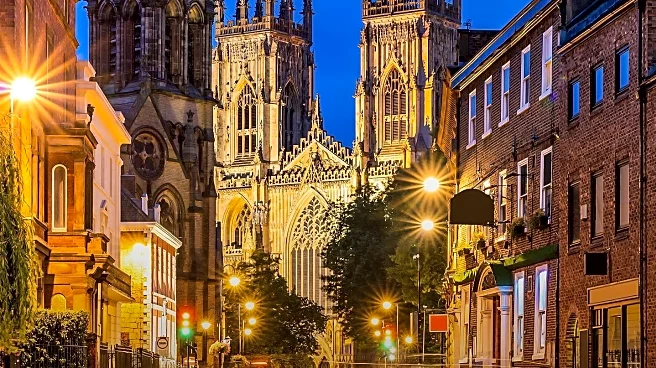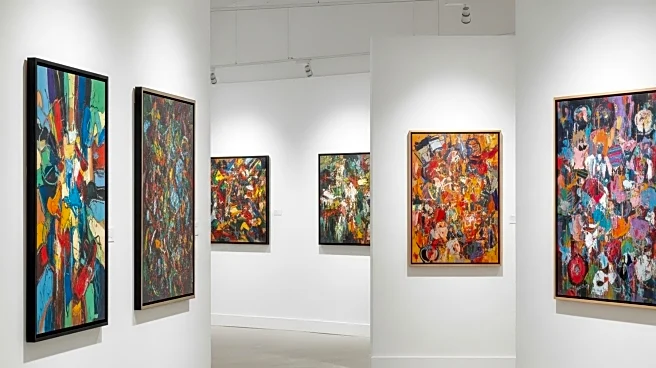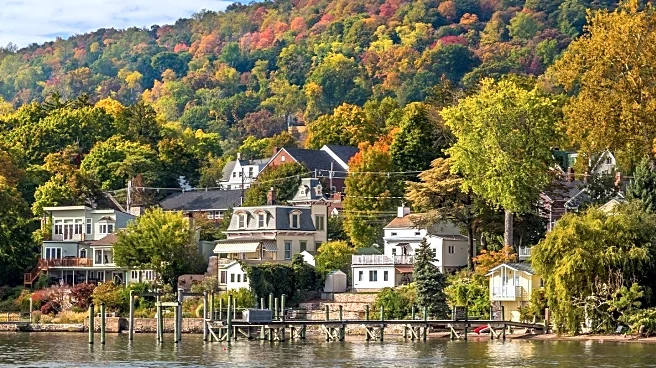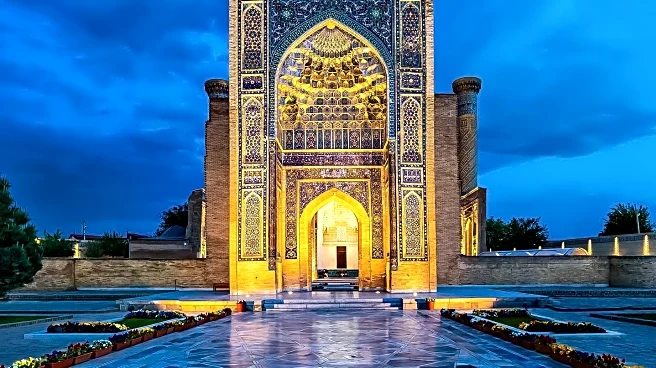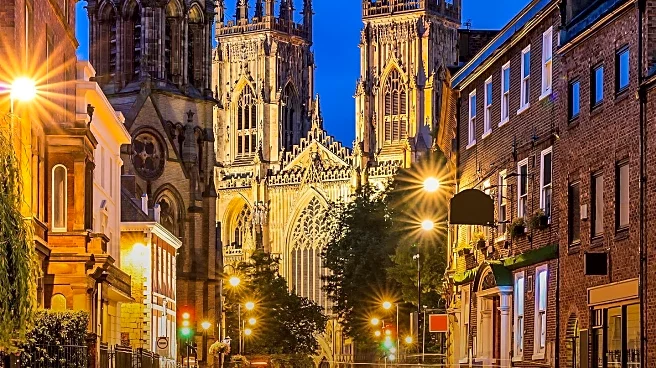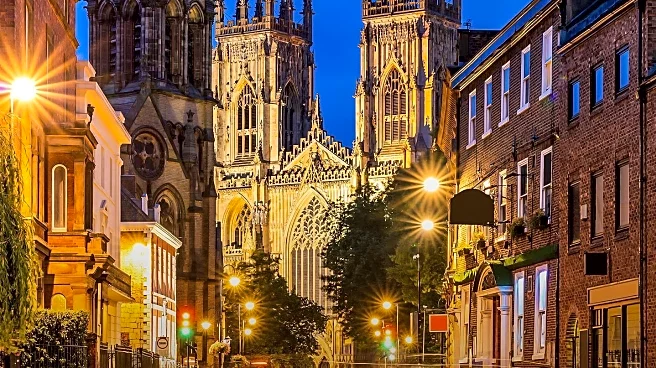What's Happening?
Plans have been submitted to transform Micklegate Bar, a medieval gateway in York's city walls, into an art gallery and shop. The Grade I listed structure, dating back to the 12th century, is considered the most important of York's four gateways. The proposal includes showcasing works by local and regional artists and offering printing demonstrations. The application emphasizes the building's cultural significance and aims to maintain its vibrancy through community-focused workshops. Micklegate Bar previously housed the Henry VII Experience and the City Walls Experience, both of which have closed. The plans ensure no structural changes to the building, with reversible alterations and the use of existing fixtures for displays.
Why It's Important?
The transformation of Micklegate Bar into an art gallery and shop represents a sustainable reuse of a historically significant structure. This initiative aims to preserve York's cultural heritage while promoting local art and community engagement. By maintaining the building's integrity and offering educational workshops, the project could enhance York's cultural landscape and attract tourism. The proposal reflects a broader trend of repurposing historical sites to serve contemporary cultural needs, potentially benefiting local artists and businesses through increased visibility and economic activity.
What's Next?
If approved by the City of York Council, the project will proceed with the planned alterations and community-focused activities. Stakeholders, including local artists and cultural organizations, may collaborate to maximize the gallery's impact. The initiative could inspire similar projects in other historical sites, fostering a balance between preservation and modern cultural expression. The council's decision will be crucial in determining the project's future and its role in York's cultural development.
Beyond the Headlines
The proposal to repurpose Micklegate Bar highlights the ethical considerations of preserving historical sites while adapting them for modern use. It raises questions about the balance between maintaining historical integrity and meeting contemporary cultural needs. The project could set a precedent for how cities manage their historical assets, influencing future policies on heritage conservation and cultural development.

